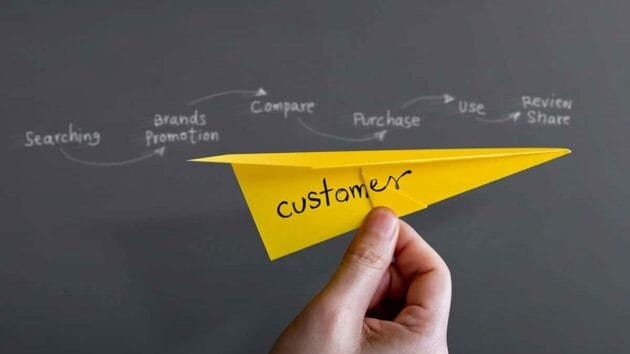Customers are the lifeblood of a business. Keeping them happy and satisfied is the number one business priority. While business tactics keep evolving with time, customer experience consistently serves as the pillar of strong businesses. Think of the world’s most successful brands and you’ll notice a common thread: They know the pulse of their customer, meet their needs, and earn their loyalty in return. In short, identifying customer needs and aligning your business approach to them is the secret to long-lasting success.
Is customer retention a challenge for your business? Do you feel your repeat buyers are dwindling in number? These could be signs that you need to do better when it comes to serving your customers what they want and need. The only silver lining here is you are not alone. Many business owners follow ongoing hypes and end up blowing their budgets on marketing without understanding the requirements of their ideal customers.
Although Innovation and consistency are great tools for business growth, they only get you further if you understand your customers’ needs, what they value the most, and how you can make their lives better. If you can put together these pieces of the puzzle, you can crack the code to long-term profitability and competitive edge.
In this detailed guide, we dive into the who, what, and why of customer needs so you can build and scale businesses to unimaginable heights.
What are customer needs?

Decision-making is a complex process that involves multiple steps. Besides internal motivations, customers also consider many external variables before settling on a product or service. Customer needs refer to the mix of these dominant variables that impact purchase decisions.
Knowing what your customers want is the first step to understanding their behavior and designing your products or services accordingly. This data allows you to segregate your target customers according to dominant variables and position yourself in the market accordingly.
While price is one of the core needs, many others can vary for products and services. For instance, functionality, design, and experience are relevant for products, while transparency, empathy, and options drive the purchase decision for services.
Recommended for you: 12 Tips for Creating a Corporate Video that Amazes Customers.
The significance of identifying customer needs

Some of the largest organizations in the world may differ in their business approach but have at least one thing in common – they all understand what their customers want.
With rapidly changing business environments and emerging competition, customers are subjected to new products daily. These developments modulate customer needs and, in turn, their purchase behaviors.
Companies that adapt their business strategy to help nourish customer requirements thrive in the long run because the more you know about your customers, the better your product can be.
- Enhance your product and services: collect market feedback and revamp your products to better suit customer needs.
- Chart customer journey: Gain insights into customer expectations and behavior.
- Gain customer loyalty: gather feedback, act on it and generate repeat customers.
- Save revenue: retained customers reduce the need for marketing and re-targeting.
Gathering in-depth customer needs data helps you:
- Divide the market into customer segments.
- Find what they value the most.
- Understand individual customer psychology.
- Create touch point maps and find satisfiers/dissatisfiers.
- Walk in their shoes.
- Design/Modify products accordingly.
- Improve customer support.
Best ways of identifying customer needs?

Great customer experience begins with the identification of customer needs. It is important to orient your product or service strategy to address customer needs. It’s not just about realigning your marketing strategy but the overall business approach. Identifying the needs of your customer does not have to be an overly complicated task. The simpler it is, the easier you can collect relevant data and get to You can use a simple, 4-step process to identify customer needs accurately.
Before that, however, you should outline your goals.
- Aligning products or services with customer requirements.
- Determining not only the primary but also the dormant needs of target customers.
The process of identifying customer needs consists of the following steps:
- Data Collection for need identification.
- Data distribution with relevant departments.
- Product creation and customization.
- Feedback collection and strategy alignment.
You may like: Holiday Email Marketing: How to Win Maximum Customers During the Peak Season? (Infographic).
Data collection
Customers do not just actively search for products that satisfy their needs but also intuitively end up with them. Data collection is the process that lets you make informed decisions on the who, what, why, and when of customers. Surveys, Interviews, focus groups, and observation are some popular data collection methods.
Data collection involves demographic profiles of customers, ranging from their age, gender, location, occupation, and income to their behaviors, preferences, and psychological traits.

Surveys
Surveys rank amongst the most widely used data collection methods by many organizations, regardless of their size. While they are cheap, the amount of information you can collect from surveys is often relatively low. However, one of the downsides of written surveys is their limited scope since they do not consider environmental factors and anticipate passive needs.
Interviews
In the interview method, information exchange takes place on a one-on-one basis. The interviewer takes participants through a pre-designed set of questions, and the answers are recorded for analysis, usually through electronic means. It is a qualitative research method because the questions are open-ended, and respondents have more freedom of expression.
Focus groups
Talking to your target customers directly is one of the best ways of knowing what they expect from your product. Interviews can help you do that, but they can be time-consuming. A focus group approach takes the interview process to a group setting, helping you save more time and optimize your resources. You can interview a set of your target audience collectively and identify their needs without having to go through them one by one.
Observation
Product design and marketing teams can form perceptions about the value of the product. No matter how innovative or attractive the merchandise is, it would only stand the test of time if it solves real-world problems.
Research suggests that the act of observing product usage is a reliable way to collect valuable data. The observation method helps businesses validate those perceptions and redefine their offering. If you see customers using your product carefully, you can find where they are struggling, noting the observations for product improvement. Any challenges thus noted would help upgrade the product design and retain customers.
“Your choice of the appropriate data collection method depends on many factors. A holistic research approach that considers multiple data points, customized to your requirements, can work wonders. For instance, Kadence USA segregates research for specific purposes, from developing new products and market understanding to brand and advertising insights.” – as explained by Ellie Tehrani, the CEO of Kadence (USA), in one of her recent interviews.
What can you do to meet customer needs?

Successful identification of customer needs is the tip of the iceberg – delivering your offering at the same levels that customers expect is equally essential. Here are a few things you do to meet customer needs.
Customer support standards
Product or service quality is just a part of the larger picture. Customers often look for quality customer support that they can rely upon. You have to align your customer support process in a way that provides ample support for pre-sales as well as post-sales customer service. The customer support staff should be trained to delight customers with speedy resolution. With technologies like live chat and VOIP, you can provide real-time support to customers around the world.
Measuring customer satisfaction
Accurate and timely data about the customer experience journey, their feedback on your product, and experience with customer support agents can help you take the right decisions. Using performance metrics like CSAT (Customer Satisfaction Score), NPS (Net Promoter Score), and CES (Customer Effort Score), you can find out how your current customers feel about your brand.
Solid communication strategy
A single-channel customer service strategy is a thing of the past. A consistent brand voice across all channels coupled with a courteous and well-trained customer support staff can do wonders for your brand. Switch to a multi-channel approach that helps you maintain communication on traditional tools and social media platforms.
Customer needs allow brands to become better at providing value to customers. When you start emphasizing customer needs, your ideal customers will relate better with your brand, stick with it longer, and eventually, help you become market leaders in your domain.
You may also like: 4 Software Solutions to Manage Your Customer’s NPS.
Summing it up

One of the biggest blunders a business owner can make is going into the market without realizing the gap between the problem their customers face and the solutions they plan on offering. Without this data, your products/services can not address the core issues of customers – they would fail to create a long-lasting impact in the market and eventually lose to the competition.
Customer-centric companies that evolve with time stay on top of their game. Their decisions are data-backed, so they have an easier time staying one step ahead of the competition.
If you want to generate consistently positive results for your business, start with the detailed process for identifying the needs of your customer. Help your customers relate with your brand and offer them the solutions they are looking for.




